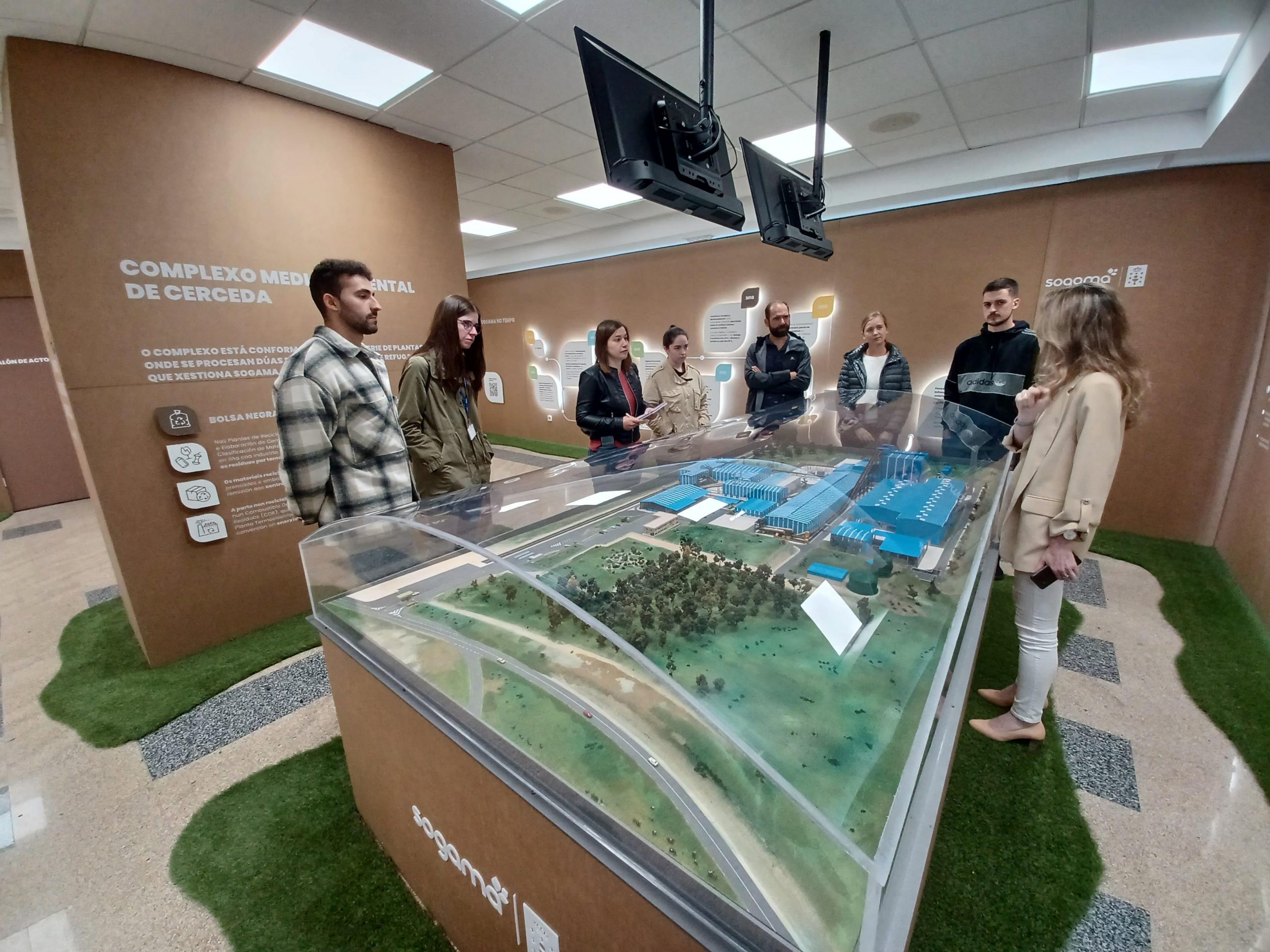Several ECOVAL partners visited the most important facilities of the Galician Environmental Society (SOGAMA), in Santiago de Compostela and Cerceda. On Wednesday 7th September, the coordinator and several members of CETAQUA, the project leader, together with members of FEUGA, the partner responsible for communication, and USC enjoyed a guided visit to SOGAMA’s industrial complex.
SOGAMA is a regional public company at the service of Galicia’s environmental policy in the area of urban waste management and treatment. It is based on the prioritisation of waste prevention, reduction, preparation for reuse, recycling and recovery. Traditionally, Sogama focused its management on two fractions of urban waste: the yellow bag, i.e. the materials deposited by citizens in the yellow container (plastic containers, cans and bricks), and the black bag (the rest) placed in the generic container. In the last three years, they have also introduced separate management of bio-waste, through collection in the brown bin and management in their compost plants. They have 37 transfer plants located in different parts of Galicia, an environmental complex and a controlled landfill in Cerceda.
In addition, SOGAMA is an associate partner of ECOVAL, and works on campaigns against food waste such as “A túa comida ten algo que dicirche”, which promotes synergies with the project’s “A new bin, are you in?” campaign.
1,000,000 tonnes of municipal waste per year
The guided tour to get to know its facilities will start at 09:30h at the Santiago de Compostela Transfer Plant. The function of these plants is to allow the transfer of waste from municipal collection lorries to containers of greater capacity (with a load of 20 tonnes) and more suitable for long-distance transport. At 11:00h they will move to the Environmental Complex in Cerceda. With a surface area of 65 hectares and a nominal waste treatment capacity of 1,000,000 tonnes per year, this is the point around which the company’s industrial activity revolves. This is where the recyclable materials deposited in the yellow bag are separated, facilitating their delivery to recyclers, and the energy recovery of the non-recyclable fraction of the black bag is carried out. From there they will go to the industrial composting plant, located in the same locality at the Areosa non-hazardous waste landfill. This facility is the end of the route and the end of the cycle for some organic waste, which, not being recoverable in other ways, becomes part of the 3,000 to 4,000 tonnes of compost produced at the plant.



